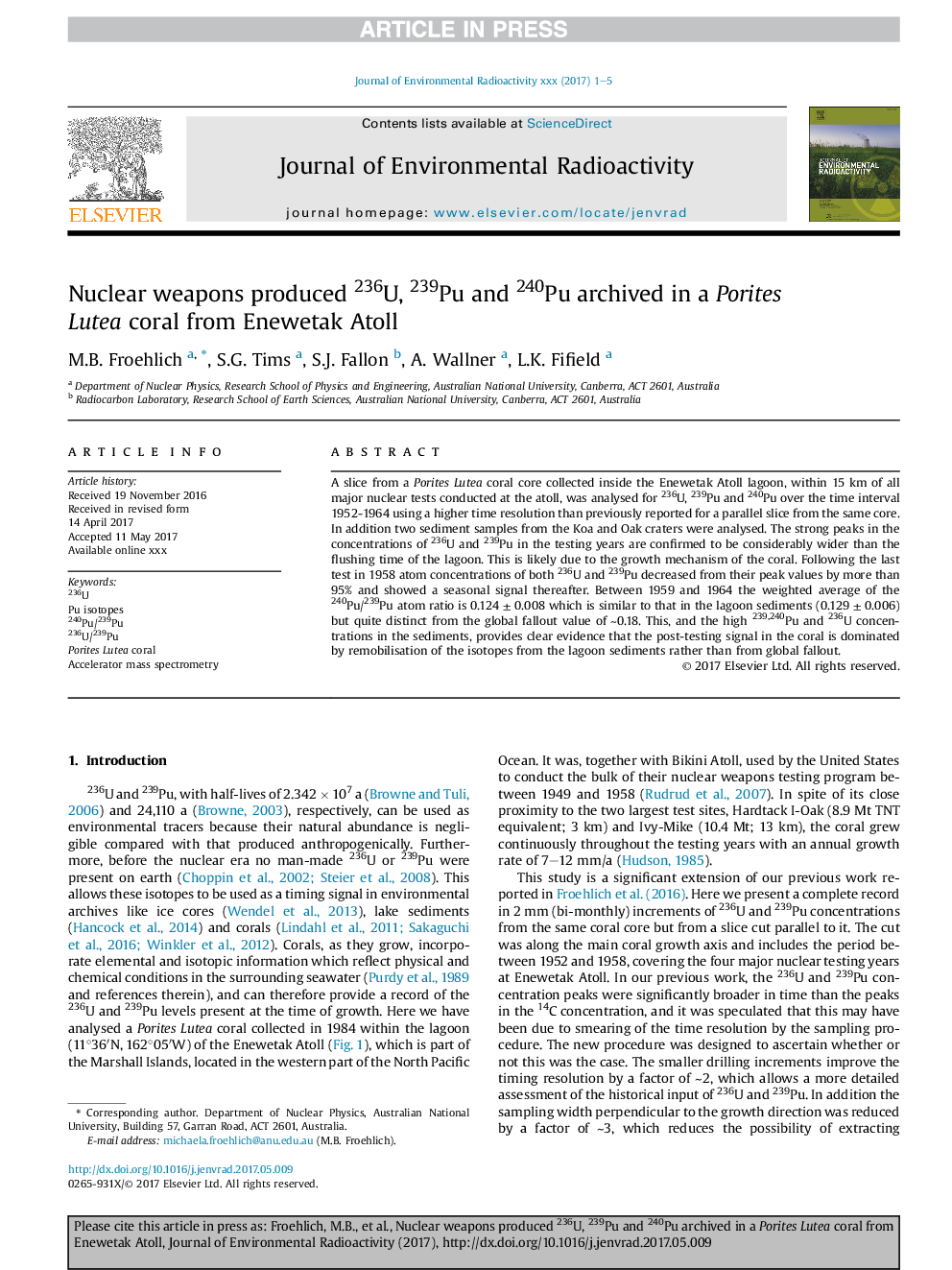| Article ID | Journal | Published Year | Pages | File Type |
|---|---|---|---|---|
| 8081017 | Journal of Environmental Radioactivity | 2017 | 5 Pages |
Abstract
A slice from a Porites Lutea coral core collected inside the Enewetak Atoll lagoon, within 15 km of all major nuclear tests conducted at the atoll, was analysed for 236U, 239Pu and 240Pu over the time interval 1952-1964 using a higher time resolution than previously reported for a parallel slice from the same core. In addition two sediment samples from the Koa and Oak craters were analysed. The strong peaks in the concentrations of 236U and 239Pu in the testing years are confirmed to be considerably wider than the flushing time of the lagoon. This is likely due to the growth mechanism of the coral. Following the last test in 1958 atom concentrations of both 236U and 239Pu decreased from their peak values by more than 95% and showed a seasonal signal thereafter. Between 1959 and 1964 the weighted average of the 240Pu/239Pu atom ratio is 0.124 ± 0.008 which is similar to that in the lagoon sediments (0.129 ± 0.006) but quite distinct from the global fallout value of â¼0.18. This, and the high 239,240Pu and 236U concentrations in the sediments, provides clear evidence that the post-testing signal in the coral is dominated by remobilisation of the isotopes from the lagoon sediments rather than from global fallout.
Related Topics
Physical Sciences and Engineering
Energy
Nuclear Energy and Engineering
Authors
M.B. Froehlich, S.G. Tims, S.J. Fallon, A. Wallner, L.K. Fifield,
